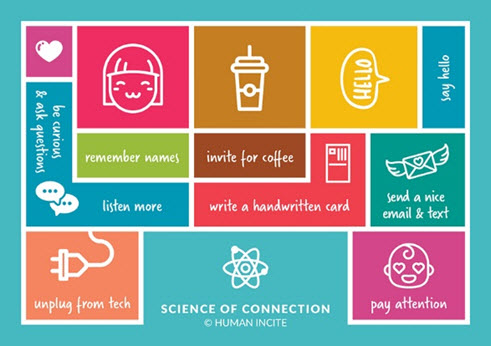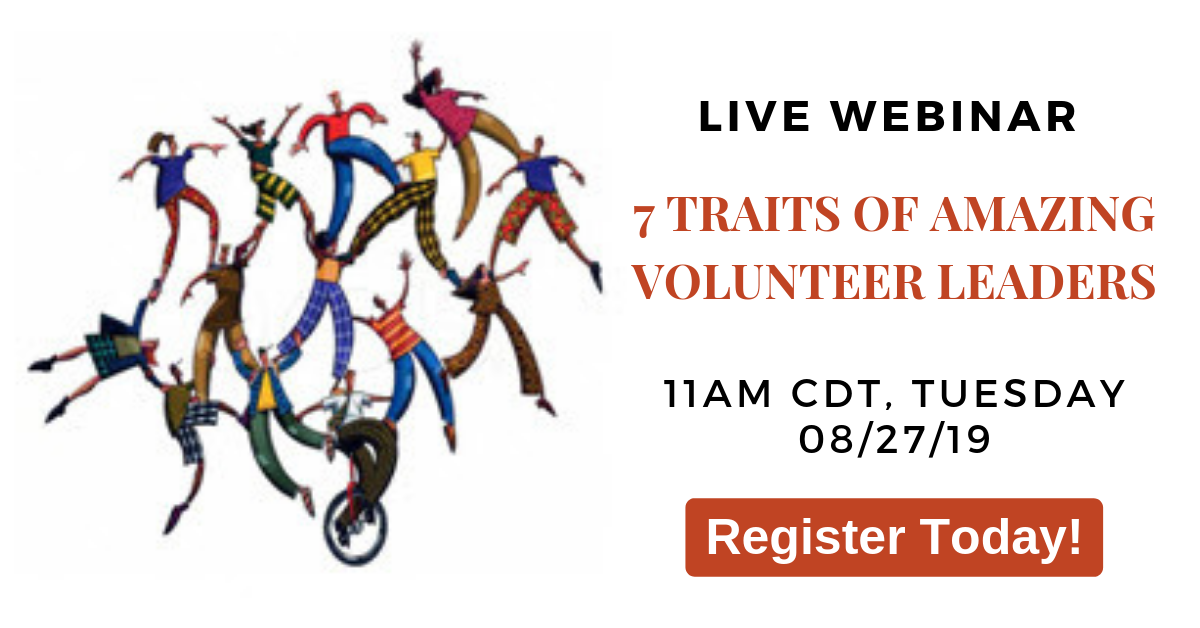“I define connection as the energy that exists between people when they feel seen, heard, and valued; when they can give and receive without judgment; and when they derive sustenance and strength from the relationship.” ― Brené Brown

Even those of us that are introverts crave connections. Historically, humans have needed connections to be safe — to live together, forage food and crops, and to protect ourselves. There is power in numbers and we are more likely to be successful if we are part of a larger group. But social scientists have discovered that humans are wired for connection and our body uses multiple systems designed to keep us healthy, happy, and to bond and build lifetime relationships with others.
Studies about the physiology of connection reveals the neuroscience that influences how we build relationships with others in our lives:
- Vocalization — Humans are just one of the species who use vocalization to convey information. Our words and tones allow us to communicate with others.
- Touch — Comfort, joy and love are conveyed through touch which provides healing and connectivity.
- Vagus nerve — Is the longest nerve in the automatic nervous system and controls functions that are under voluntary control such as heart rate and digestion. Activating this nerve creates a compassionate response and helps us to connect with others.
- Oxytocin — Also known as the “love hormone”, promotes bonding between loved ones by creating a chemical response when we’re with those we like most.
- Empathy circuits — Are found in the parts of our brains called the supramarginal gyrus and allows us to separate our emotions from those of others and recognize that their experiences are different.
- Reward circuitry — Generates a dopamine effect in our brains that gives us a sense of reward when we complete tasks, play games, and have positive interactions which make us want to do them more.
Social Science Builds Trusted Relationships and Loyalty
We can build strong relationships with others by tapping into our “social brains” to create connections, provide support, and to develop a sense of alignment.
After all, if we’re in the membership business, we’re in the relationships business. There is no better way to create a connection than face-to-face interaction. When we make eye contact with others, smile at them and pay close attention when they’re talking, their social brains “light up” internally and so do ours!
This can be accomplished through networking, peer-to-peer discussions and educational sessions. But it requires engagement and interaction between us.
To enhance connectivity and build deeper relationships, we have to engage emotionally by promoting shared feelings. Asian-oriented cultures do this the best. Growing up in Honolulu and working for the state chamber of commerce, I’d often have to tell “mainland” business executives to refrain from “getting down to business.” Instead, it’s important to socialize through small talk, sharing stories, and find commonalities among you. This seemingly unimportant behavior activates the social brain circuit and actually creates brain synchrony. It’s not unusual to see friends and loved ones display physical mirroring (e.g., postures, gestures) because they are so in-sync with one another!
Trusted relationships also develop cognitive connections between people that feel they are on “the same page” or have “shared goals.” A feeling of common objective activates the social brain and amplifies trust and understanding among people. Developing empathy towards others by “walking in their shoes” or understanding their challenges or concerns engages our social brains, which helps us develop common goals that resonate with others who feel the same way.
Build Connections with Prospects, Strengthen Connections with Members
Now that you realize there is neuroscience evidence in how connections and relationships are developed, how can you leverage social science to create connections with future members and to build stronger bonds with current members?

In the blog, The Science of Connection, Blythe Rowe offers great tips on things we can do in our attempts to recruit or retain members, although these are important things for you do within your organizations and to strengthen and expand your circle of influence!
In this age of social media, is it still possible to tap into the social brains of our friends and contacts to build stronger connections and strengthen our relationships with them? Yes, but we should use technology to reinforce and not replace our interactions with others.
We can do that by reaching out to people we haven’t talked with for a while, just to say “Hello” or by commenting on a post they shared. Just clicking on “Like” isn’t the same thing as telling someone “I’m so sorry to hear about the loss of your Mom.”
You can even go the extra mile by picking up the phone and having a live conversation or sending them a card. When my Mom passed away a few months ago, I was positively surprised to hear from over 200 Facebook friends who shared their condolences and even more touched when several of them mailed a sympathy card with a handwritten note.
High touch and technology can go hand-in-hand as long as we remember that connections involve interactions, empathy and paying attention to what really matters. Revenue flows where relationships grow!
Cathi Hight helps organizations manage constant change, develop customer-centricity and “work smarter, not harder”. She is President of Hight Performance Group and the developer of The Member Retention Kit, A New Approach to Tiered Membership and Work Smarter, Not Harder. Learn more at www.hightperformance.com.


